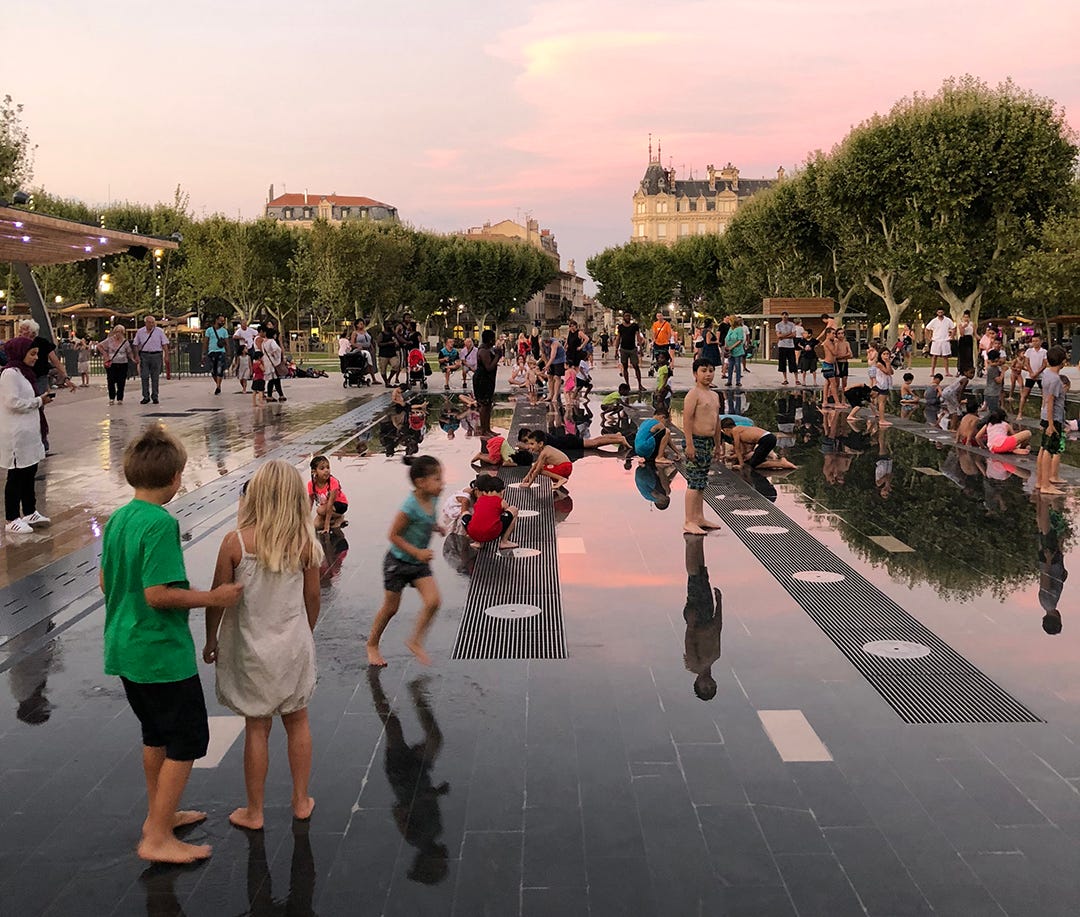There’s an old scripture that says “Let the little children come to me and do not hinder them, for to such belongs the kingdom of heaven.” Where others treated the children as a nuisance, Jesus offered them his kingdom.
In the Christian tradition, the kingdom of heaven is a city. It’s a remarkable contrast from the modern Western ideal of suburban withdrawal and quarter-acre lots keeping us arms-length from our neighbors.
The kingdom of God is lived in proximity. And it belongs to those like the children. Heaven is a child-friendly city.
And if that’s true, then it should be on earth as it is in heaven.
When we build cities with the wealthy and the childless front-of-mind, we wind up designing places that cater to the distinctives of those demographics. Individuality may have its place in our fashion, our home décor, or our taste in music. But cities should be defined by what we have in common, not what differentiates us from one another.
When we build cities for children, we literally build from the ground up. We start at the first stages of life that people of all races, faiths, and economic statuses share. We build for our commonalities, not our differences.
In places where busses, bikes, and boots are secondary (or near-impossible) methods of transportation, we’re presented the choice of safety or equity. We have to either restrict the right to mobility for those who cannot or should not drive, or allow them to drive at the expense of public safety.
But this is a false choice.
Building cities for children is how we unlock places where the vulnerable can flourish. Because when children can get around safely and independently, so can just about everybody. Equity and safety can walk in step with one another.
And this applies to more than just transportation.
Have you ever considered how absurd it is that visiting a nursing home is classified as “volunteerism?”
This is because our current prevailing design pattern isolates seniors from children and the rest of society. More senior living facilities share a parking lot with a strip mall or Home Depot than share a common greenspace with schools, daycares, and neighborhoods.
But in a child-friendly city, visiting the elderly doesn’t have to be an act of community service, or an undertaking whatsoever. Multigenerational socializing occurs naturally, and that’s something to strive for. Because children should be surrounded by a community of adults that care about them beyond their immediate family, and we can design for that.
And the elderly are hardly the only vulnerable population that benefits from child-friendly design:
Removing car-dependency creates one less major expense for those climbing out of poverty.
Kid-friendly activities in the park like coloring and music also help dementia patients.
Safe, walkable streets serve those battling prediabetes and cardiovascular issues.
Accessible architecture makes cities more welcoming to our homeless neighbors.
In truth, the only people that don’t gain from building cities for children are those who seek to consume the city as product, rather than investing in it as a community. And we should be comfortable with that. We shouldn’t date those who objectify us, and our cities shouldn’t either.
When cities belong to children, they actually belong to all of us. And when we can all live together in peace, we get a taste of what heaven is like.
One Thing to Get Excited About:
As we talk about considering vulnerable populations, Texas nonprofit OurCalling is building a 500-home village for the homeless, with additional facilities on-site including a health clinic, pharmacy, and kitchen.
You can read more about the project here.
One Action to Get You Started :
As you’re walking, biking, bussing, or driving your community this week, take note of specific opportunities to make the city more friendly for children.
Write down the opportunity, write down an action step (“build X,” “call X,” etc.), and get going.
One Resource to Check Out:
Arup Design Firm has a great report that takes a deeper dive on what it looks like to build child-friendly cities. You can access a free PDF download of the report here.





Great read! And yes, the lack of walkability is definitely a reason for social isolation.